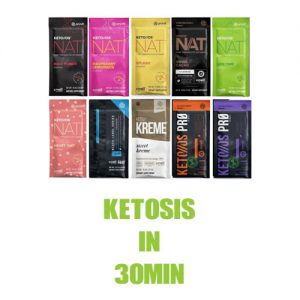Continued from Vegetable Cheat Sheet A-K…
Leeks
Season: Spring / Summer / Autumn
Cooking: Saute / Bake
Tips: Trim off ends before cooking. Split lengthwise for baking. Finished when tender.
Lima Beans
Season: Summer / Autumn
Cooking: Boil
Tips: While dried lima beans are a legume, the fresh beans are a vegetable. Hull your own or buy frozen. Put frozen or freshly hulled beans into boiling water and cook for about 8 minutes or until tender. Drain and serve.
Mushrooms
Season: Year-round
Cooking: Saute / Grill / Bake / Raw
Tips: Must be very fresh. Delicious idea is to remove stem and stuff with butter, cheese, herbs, bacon, etc. Can serve as a hot veg or cold salad veg.
Onion
Season: Year-round
Cooking: Saute / Stir-fry / Bake / Slow-cooker / Raw
Tips: Usually partnered with other veg, but also tasty on its own! Use butter, olive oil and/or water to caramelise onions when sauteing or baking. Red onion is nice as a raw salad veg.
Parsnips
Season: Autumn / Winter
Cooking: Boil / Saute / Bake / Slow-cooker
Tips: Trim, peel and cut into sticks or chunks before cooking. Boil and mash with butter and cream just like potatoes. Or bake or saute just like carrots. Oven-baked parsnip sticks look like French fries!
Peas (Garden or Shell / Sugar Snap / Snow)
Season: Spring / Summer
Cooking: Raw / Grill / Stir-fry
Tips: Peas belong to the legume family and can be eaten fresh or dried. Shell your own fresh peas or buy frozen. Put frozen or freshly shelled peas into boiling water for a few minutes, until just tender. Drain and serve. Chinese or Sugar Snap Pea varieties can be trimmed and steamed for one minute and do not need butter as they are naturally buttery.
Potatoes
Season: Year-round
Cooking: Bake / Saute / Boil / Slow-cooker
Tips: Don’t peel, as most of the nutrients are just under the fibrous skin. Brush the skin with oil for crispy baked potatoes. Alternatively, wrapping in foil helps bake nicely. The smaller the potato chunks in the slow cooker, the mushier the finished potato. Can also slow-cook potatoes whole.
Pumpkin ( many varieties including butternut [see winter squash])
Season: Autumn / Winter
Cooking: Bake / Steam / Grill / Slow-cooker
Tips: Cut in half, chunks, wedges or slices and scoop out seeds before cooking. Easier to remove skin after cooking or scoop cooked flesh out of skin, though skin can be cut off beforehand. Butternut pumpkin can be served as a hot veg or cold cooked salad veg and makes wonderful soup. Roast seeds for a delicious snack: toss in oil and salt and bake on a baking sheet at 120 C until dry.
Rutabaga (Swede)
Season: Autumn / Winter
Cooking: Boil / Saute / Bake
Tips: Great lower-starch/lower GI alternative to potatoes. Dice, grate, or mash like you would a potato. Like other root vegetables, roasting in the oven brings out the sweetness.
Spinach
Season: Spring / Summer / Autumn
Cooking: Raw / Saute / Bake
Tips: Always have some of this versatile leafy green in the fridge. Baby spinach best for salad and throwing into mixed dishes. Saute like kale. Mix into stuffings, quiches and more for baking.
Summer Squash (Zucchini, Yellow)
Season: Autumn
Cooking: Saute / Bake / Grill
Tips: Seeds and skin are edible. Never steam or boil. Easily overcooked, so finish cooking when just soft.
Sweet Potato (Kumara/Yams)
Season: Year-round or cooler months
Cooking: Bake / Saute / Boil / Slow-cooker
Tips: Don’t peel, as most of the nutrients are just under the fibrous skin. Cook like potatoes. Roasting (baking) brings out the sweet flavour. Be sure to eat with butter (or egg yolks or cream) for highest fat-soluble nutrient absorption. Related to the morning glory family, not the potato! Comes in yellow, white and purple flesh, in addition to the popular orange variety.
Tomatoes
Season: Late Spring / Summer / Early Autumn
Cooking: Raw / Saute / Bake / Grill
Tips: Technically a fruit but usually eaten like a vegetable, tomatoes are incredibly versatile. Can be served both hot and cold.
Turnips
Season: Autumn / Winter
Cooking: Boil / Saute / Bake / Raw
Tips: A cousin of the rutabaga (swede). Lower-starch alternative to potatoes and can be cooked similarly. Baby turnips can keep their skin, otherwise tough skin can be peeled or cut off. Can also be grated raw in salads or sliced and eaten with dip or nut butter.
Winter Squash ( Butternut Pumpkin, Acorn Squash, Spaghetti Squash)
Season: Autumn / Winter
Cooking: Bake / Grill / Slow-cooker
Tips: Cut in half, chunks, wedges or slices and scoop out seeds before cooking. Easier to remove skin after cooking or scoop cooked flesh out of skin, though skin can be cut off beforehand. Butternut pumpkin can be served as a hot veg or cold cooked salad veg and makes wonderful soup. Pumpkin seeds can be dried or roasted to eat as a snack.
Happy Cooking!
References:
– Simply in Season Website: http://simplyinseason.org/season/guide/pumpkins.html
– Nourishing Traditions; Sally Fallon. Washington DC: New Trends Publishing, 1999.
Vegetable Cheat Sheet L – Z – October 2015








